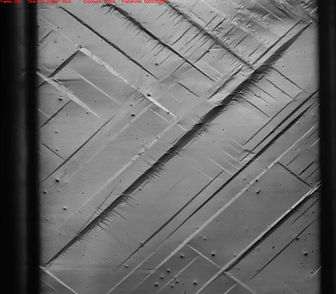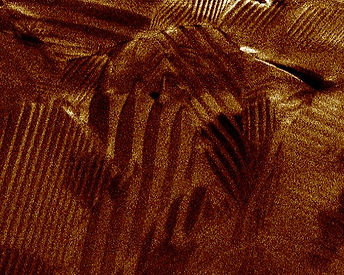
Research Overview

We study the response of materials and structures to large multi-physical fields, and at short time scales.


Our experimental investigations are motivated by the need for quantitative measurements across length and time scales. We develop specialized experiments for mechanics and multi-physics problems at short time scales. Examples involve miniature Kolsky bars (high strain rate impact), high-speed optical microscopy and interferometry, multi-scale electro-mechanical test beds, and pump-probe acoustic spectroscopy. Current and future directions will extend these capabilities to study transient material response under complex stress states with multi-physical coupling.

With a density two-thirds that of aluminium, magnesium is currently sought after as the next-generation light-weight structural metal for a technology-driven, energy-sustainable future. Naturally, many applications of these materials require them to be resilient under impact loading conditions such as, in car crashes, military applications and space exploration. However, the mechanisms of plastic deformation and failure are non-intuitive at time scales on the order of micro-seconds and less. My doctoral research focused on understanding the fundamental mechanisms governing the strength of magnesium and it's alloys.

Collaborators: Prof. K. T. Ramesh (JHU - PhD advisor), Dr. Meng Zhao (JHU), Dr. Debjoy Mallick (US Army Research Lab), Prof. Todd Hufnagel (JHU), Dr. Andrew Leong (JHU),


Ferroelectrics are a class of electro-active materials, ubiquitous across a wide range of technological applications e.g., energy harvesting, sensors & transducers, nano-electronics and active structures. At the core of these multi-functional applications is the coupling between electrical, mechanical and thermal fields. Microscopically, this manifests as the heterogeneous evolution of volume defects called "domains", separated by planar defects called "domain walls". Our efforts focus on understanding these dissipative kinetics, their effects on electro-mechanical switching and dynamic viscolelasticity in ferroelectric ceramics and crystals.
Collaborators: Prof. Dennis M. Kochmann (ETH), Prof. Morgan Trassin (ETH), Dr. Claire Griesbach (ETH), Mr. Mathieu Brodmann (Ph.D. student, ETH)

I am currently developing a new program at the Laboratoire de Mecanique des Solides to investigate mechanics and multi-physical coupling in ferromagnetic shape memory alloys. Stay tuned for future updates...
Architected materials are materials whose properties are designed at the fundamental unit cell length scale (which depends on the length scale of the structure), and governed by the arrangement of these fundamental unit cells. We are interested in a specific class of these materials whose acoustic dispersion characteristics may be designed through complex architectures. However, the ability to fabricate such materials, and measure their broadband acoustic dispersion characteristics are non-trivial, requiring significant development. These are the goals of this research program.

Collaborators: Dr. Charles Dorn (ETH), Dr. Bastian Telgen (Kistler), Prof. Dennis Kochmann (ETH)
